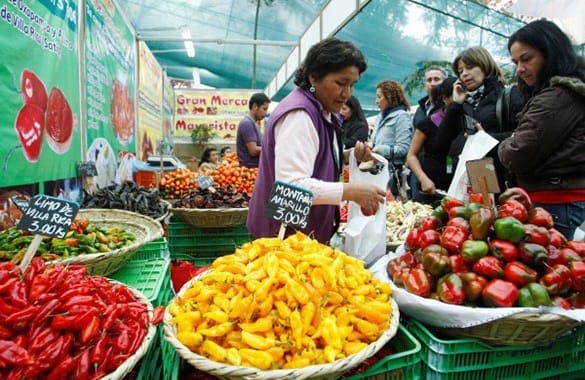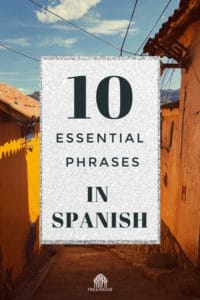Exploring a foreign country is exciting. You experience new cultures, scenery, food, and people. You get to know what it is like to live in a completely different environment, and that is a good, good thing.
Something that can enhance that experience is knowing the basic phrases in the native language of the country which you are visiting. In Perú the native language is Spanish.
Here are the 10 essential phrases that you need to know before you arrive in Peru:
Mucho Gusto
Pronounced: Moo-cho Goo-stow. This phrase means “nice to meet you.” It is obviously used when you’re meeting someone for the first time. It can be used in the beginning and the end of the conversation. Instead of saying “adios” to someone who you just met, you can simply say “mucho gusto!” And if you are wondering how to respond to “mucho gusto”, the best answer is “igualmente” o “mucho gusto también”.
¿Como te llamas?
Pronounced: kohm-oh te yamas. This phrase means “what is your name?” The correct response when somebody asks you “como te llamas” is “me llamo [insert your name here].” Pronounced: may yamo [insert your name here].
De donde eres?
Pronounced: day-dohn-day-air-es. This phrase means “where are you from?” The correct response when somebody asks you “de donde eres” is “yo soy de [insert your answer].” Pronounced: yo-soy-day [insert your answer].
Donde esta ______?
Pronounced: dohn-day eh-sta. This phrase means “where is _____” and should be used anytime you want to know the location of something. Here are a few examples:
¿Dónde esta…
- – el baño? (ell-bawn-yo) – the bathroom
- – el guia? (ell-gee-ah) – the guide
- – el cajero? (ell-ka-hair-oh) – the ATM machine
- – la comida? (la-kohm-eey-da) – the food
- – el hotel – the hotel
Cuanto esta?
Pronounced: kwan-toe-eh-sta. This question means “how much” and would be used anytime your trying to figure out the price of an item. You can simply point to the item in which you’re interested and say “cuanto esta?”
Me gustaria tener _______.
Pronounced: may-goose-tar-eey-ah ten-air. This phrase means “I would like to have [insert your request].” This phrase is useful when ordering food at a restaurant.
Como estas?
Pronounced: kohm-oh eh-stas. This phrase means “how are you?” and can be used not only to find out how somebody is feeling, but can also be used as a way to say hello. If in passing someone says “hola!” to you, it would acceptable to reply: “como estas?”
Bonito.
Pronounced: bone-eat-oh. This word means “beautiful.” It could simply be used anytime you see something that you like. If you see a ruin that looks wonderful, you would say “bonito,” although if you see a woman or girl that you think is beautiful, you would change it to “bonita” (bone-eat-ah).
Rico.
Pronounced: reek-oh. This word literally means “rich,” but is used to describe something as delicious. If you enjoy the cuy that you just ate and want to give a one-word compliment to the chef, “rico” would that word. When you try some Peruvian dish, you’ll probably want to say: qué rico!
Buenos Dias; Buenos Tardes; Buenos Noches.
Pronounced: bwayne-ohs dee-us; bwayne-ohs tar-days; bwayne-ohs no-chase. These three phrases mean, in order, “good morning,” “good afternoon,” and “good night.” You used the first phrase until noon and the second phrase until evening-time.
With these essential phrases, you are well armed for your trip to Perú, or any other spanish speaking country for that matter. Take the time to memorize these phrases for your trip and you will have an experience that is much more unique and memorable.
Happy Travels…


